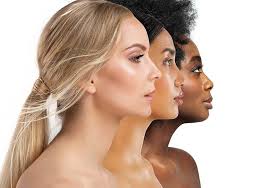Understanding the Color Season System: A Comprehensive Guide

their skin tone, eye color, and natural hair color. This system, which emerged in the 1980s, has become a popular method for improving personal style, wardrobe selection, and overall appearance. By identifying one’s color season, individuals can gain a deeper understanding of which shades complement their features best, enhancing their natural beauty and boosting confidence.
This article delves into the color season system, exploring its origins, the four primary seasons, and how to determine your color season. We will also examine how understanding your color season can elevate your fashion choices, makeup routines, and even home décor.
Table of Contents
ToggleThe Origins of the Color Season System
The color season system was developed by color consultant and author Carole Jackson in her 1980 book Color Me Beautiful. Jackson’s work aimed to help individuals better understand how certain colors interact with their natural coloring. She created a framework in which people were categorized into four distinct seasons: Winter, Spring, Summer, and Autumn. Each season was associated with specific color characteristics—cool or warm, light or dark—based on the undertones found in a person’s skin, eyes, and hair.
The premise of the system is that each individual falls into one of the four seasons, and within that category, certain colors are more flattering to the individual’s natural coloring than others. For example, those with a “Winter” profile tend to look best in cool, bold colors like black, white, and jewel tones, while those with an “Autumn” profile shine in earthy, warm tones like rust, olive, and gold.
Over time, the system has been refined, and today, many color analysts use additional sub-categories such as “Soft Autumn” or “Bright Winter” to make the analysis even more precise.
The Four Primary Color Seasons
- Winter: The Cool, Bold Season
- Color Characteristics: People classified as Winters typically have cool undertones, with skin tones that can range from very fair to very dark. Their hair may be dark brown, black, or sometimes even platinum blonde, and their eyes are often cool-toned, with shades of blue, green, or dark brown.
- Best Colors: Winters look great in high-contrast, bold colors. These individuals suit cool colors such as white, black, navy blue, emerald green, and jewel tones like ruby red and sapphire blue. Winters should avoid earthy or muted colors, as they can clash with the coolness of their undertones.
- Seasonal Notes: Winter is the season of clarity and contrast, and those who belong to this group often find that they thrive in colors that match this dynamic.
- Spring: The Warm, Bright Season
- Color Characteristics: Spring individuals typically have warm undertones, often with a light and bright complexion. Their hair is usually golden blonde, light brown, or red, and their eyes are often a clear blue, green, or light brown. Springs often appear youthful with a fresh, lively look.
- Best Colors: Springs look best in warm, bright colors like coral, peach, aqua, turquoise, and clear, light shades of yellow and green. These colors complement their vibrant and warm undertones. Springs should avoid dark, muted, or overly cool colors, as these can dull their natural warmth.
- Seasonal Notes: The Spring palette is characterized by freshness and vitality, and those with this season often shine in light, clear, and warm hues that mirror the blossoming season of Spring.
- Summer: The Soft, Cool Season
- Color Characteristics: Summer individuals also have cool undertones, but their natural coloring is generally softer and more muted than that of Winters. Summers tend to have lighter skin with pink or neutral undertones, with hair that is often light blonde, light brown, or ashy, and their eyes can be blue, gray, or soft hazel.
- Best Colors: Summers look best in pastel shades, soft neutrals, and cool-toned colors such as lavender, rose, mint, and soft blue. These colors harmonize with their soft, cool undertones. Summers should avoid vibrant, intense colors or overly warm hues, which can overwhelm their delicate coloring.
- Seasonal Notes: Summer is the season of softness, and individuals in this group often find their best looks in muted, cool, and light colors that reflect the gentle and serene nature of summer days.
- Autumn: The Warm, Earthy Season
- Color Characteristics: Autumn individuals typically have warm undertones, with a complexion that ranges from medium to deep. Their hair is usually rich and warm, including shades like deep brown, auburn, or red. Autumns often have eyes that are brown, green, or hazel, with a golden or olive hue to their skin.
- Best Colors: Autumns are flattered by rich, earthy colors such as deep browns, olive green, burnt orange, mustard yellow, and copper. These colors enhance the natural warmth in their complexion. Autumns should avoid overly bright or cool colors, as they can wash them out.
- Seasonal Notes: The Autumn palette is earthy and rustic, and those who belong to this group tend to shine in colors that reflect the changing leaves and harvest season, with a focus on richness and warmth.
How to Determine Your Color Season
Determining your color season involves examining several key features of your natural coloring: your skin tone, hair color, and eye color. There are different methods to find your season, but most color analysts use the following steps:
- Assess Your Undertones
- The first step is to identify your skin’s undertone—whether it’s warm, cool, or neutral. A simple test involves looking at the veins on the underside of your wrist. If your veins appear blue, you likely have cool undertones. If they appear green, your undertones are warm. If you have a mix of both, you may be neutral.
- Examine Your Hair and Eye Color
- Your natural hair and eye color can give additional clues to your color season. For example, if you have dark, ashy hair with blue or gray eyes, you may be a Winter or Summer. If your hair is golden or red and your eyes are light or warm-toned, you may belong to the Spring or Autumn palette.
- Try on Different Colors
- Once you have a general idea of your undertones, experiment with clothing in various colors. Pay attention to how certain colors make your skin glow or how others might make you look washed out or tired. Bright, clear colors tend to suit those with cool undertones, while warm, earthy tones complement individuals with warm undertones.
- Consult a Color Analysis Expert
- If you’re still uncertain about your color season, consider consulting a professional color analyst. They can perform a more detailed assessment and give you personalized guidance on your best color palette.
The Benefits of Knowing Your Color Season
- Building a Flattering Wardrobe
- When you know which colors suit you best, it becomes easier to curate a wardrobe filled with pieces that flatter your natural coloring. This saves time and money by helping you avoid buying clothing in colors that don’t work for you.
- Enhancing Your Makeup
- The right makeup colors can enhance your features and make you appear more vibrant. Knowing your color season can guide your choice of foundation shades, eye makeup, blush, and lipstick. For example, Summers might gravitate toward soft, pink-toned blushes and lipsticks, while Winters may choose deeper shades like burgundy or plum.
- Improving Your Overall Look
- Wearing the right colors not only improves how others perceive you but can also boost your own self-confidence. Colors that complement your natural features can create a harmonious, radiant look, while clashing colors can have the opposite effect, leaving you feeling less put-together.
- Perfecting Your Home Décor
- The principles of color analysis extend beyond personal style. When decorating your home, knowing your color season can help you select the perfect color scheme. Whether it’s wall paint, furniture, or accent pieces, using colors from your seasonal palette can create a harmonious and inviting space.
Conclusion
The color season system is a powerful tool for understanding which colors enhance your natural beauty. By identifying your season—Winter, Spring, Summer, or Autumn—you can make more informed choices about your wardrobe, makeup, and even interior design. While the system can seem complex at first, once you understand your color palette, you’ll find that it brings clarity to your style and helps you highlight your most flattering features. Whether you’re looking to refine your personal style or just want to feel more confident in your everyday appearance, understanding your color season can make a significant difference.





